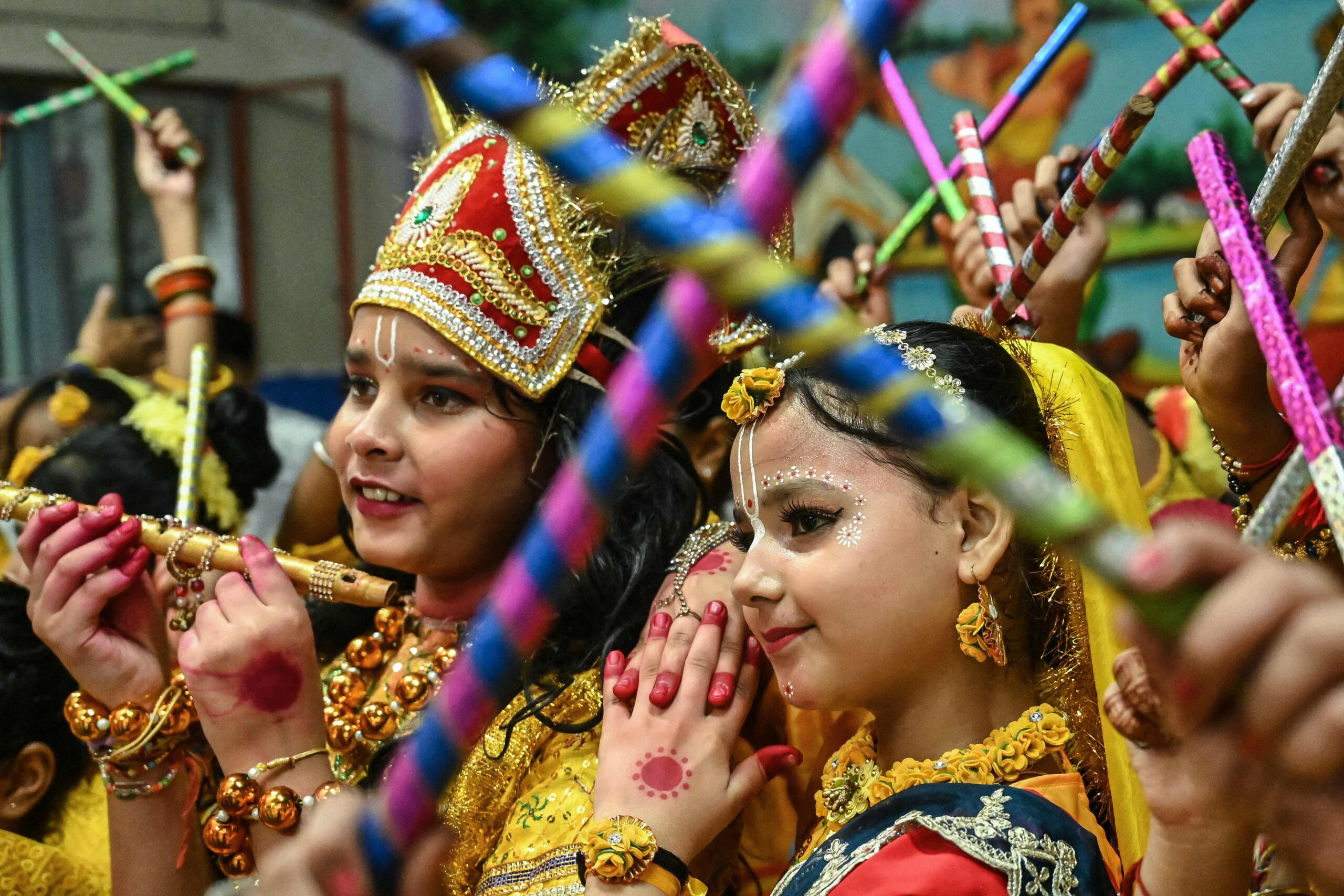
Janmashtami, scheduled to be celebrated on August 16 this year, commemorates the birth of Lord Krishna, the eighth incarnation (avatar) of Lord Vishnu, one among the three principal deities in the Hindu Trinity.
The Trimurti, three deities consist of Brahma, Vishnu and Shiva, representing the cosmic functions of creation, preservation and destruction respectively. Janmashtami is also known as Krishnashtami, Janmashtami or Gokulashtami and is celebrated on the eighth day of the Krishna Paksha in the holy month of Shravan, annually. Lord Krishna is a god of love, compassion and protection.
Lord Krishna is considered to be the eighth avatar of Lord Vishnu, born in the Dwapara Yuga, to restore dharma (righteousness). Dwapara Yuga (epoch) is the third yuga in the Hindu cosmology. In Hinduism, time is cyclical, measured in yugas — Satya or Krita, Treta, Dvapara and Kali, which keep repeating in a cycle.
Birth Of the Lord
Lord Krishna was born in a prison in Mathura, where his parents — Devaki and Vasudeva — were confined by his uncle, King Kamsa. The king lodges Krishna’s parents in prison following a warning by a celestial voice that his sister Devaki’s eighth son would be the cause of his death. On hearing to the warning during Devaki’s wedding and in a bid to avert the prophecy, Kamsa imprisons his sister and brother-in-law and promptly kills the first six of her babies soon after their birth.
When Devaki’s seventh son was born, he was secretly transferred to the womb of Rohini (Vasudeva’s first wife) and he becomes Balarama, Krishna’s sibling. His another sibling, Subhadra, is the daughter of Vasudeva and Rohini, who marries Arjuna.
Yamuna Split
According to mythology, during Krishna’s birth, the guards at Devaki’s cell fall asleep and the prison doors open miraculously, enabling Vasudeva to shift the newborn through River Yamuna, to his foster parents, Yashoda and Nanda, living at Gokula in Vrindavan. Amidst heavy rain, thunder, lightning, and strong winds, the river, which was in spate, splits for the safe passage of Vasudeva, along with the infant Krishna. It is mentioned that the serpent god, Adisesha, protected Krishna from the rain under his hood. The parting of the river is one of the miracles associated with Krishna’s life, revealing his divine nature.
The mention of a similar incident – splitting of a huge water body, is found in The Bible. It is believed that Red Sea also split when Moses, the prophet of God, led the Hebrews out of slavery from Egypt after the tenth plague. Moses, also known as Moshe and Musa, is a prophet in all three Abrahamic faiths — Judaism, Christianity and Islam.
During the same time, Yashoda gives birth to a baby girl, Yogamaya, and by the time Vasudeva reaches Nanda’s house in Gokula, she falls asleep, allowing Vasudeva to swap the babies. He returns to the prison with Yogamaya, places the infant in Devaki’s bed and shackles her to make it appear as though she had given birth to a baby girl. Continuing his usual practice of banging the newborn to the wall, Kamsa picks up Yogamaya and when he tries to smash her, to his utter shock, she goes into the air and mocks at Kamsa with a thunderous laugh, saying that Kamsa’s real enemy has already taken birth and is safe at Gokula. After this utterance, Yogamaya flows into the skies.
Celebrations
Krishnashtami is celebrated with great enthusiasm and excitement through devotion, music, dance, and community spirit at Mathura, Vrindavan, Dwaraka, Jagannath temple at Puri, apart from all the ISKCON temples across the world. The temples are illuminated and beautifully decorated with flowers and garlands. The celebrations begin with ‘Mangala aarti’ and special rituals are performed later in the day. Group dancing and singing of kirtans and bhajans. Devotees observe day-long fast, keeping vigil until midnight, when the Lord is believed to have taken birth. In some places, the Raas Leela is enacted, kids are dressed as Krishna and Radha, Srimad Bhagavatam is read and heard, devotees take out procession of the deities — Lord Krishna, Lord Balabhadra and Goddess Subhadra.
Dahi Handi
The Dahi Handi is a significant celebration on Janmashtami. It symbolizes Krishna’s mischievous habit during his childhood — stealing butter and curd. At the same time, the event also emphaises teamwork, coordination, and determination to overcome challenges. It is a lively event of the celebration when a pot filled with yogurt or butter is suspended high above the ground, and teams, known as Govinda Pathaks, form human pyramids try to reach and break it. It involves a lot of fun with music, cheerleading, and prizes for the winning teams. The agility, spontaneity, strength and coordination of the teams is displayed during the event.
Wishing all the readers a joyful and exuberant Janmashtami this year.
